The following list reproduces the style of Nancy’s “58 Indices on the Body: Corpus” with new considerations based on Nona Inescu’s exhibition “Lithosomes” running at Exile Gallery, Berlin.
By Àngels Miralda Tena | Images courtesy Exile Gallery and the artist
27 Indices on the litho-body (Corpus)
Published in 2006, Jean-Luc Nancy’s Corpus questions how we can think the body anew. The flexible terminology and culturally malleable use of the term “body” can refer to a subject or a multitude of component parts. How can the body politic, and the body of letters, and the body of mortal creatures be subscribed into a single concept: that of a collection of individual parts brought together for a larger function.
The following list reproduces the style of Nancy’s 58 Indices on the Body: Corpus with new considerations based on Nona Inescu’s exhibition “Lithosomes” running at Exile Gallery, Berlin, through December 2. Accompanied by a text by Ion Dumitrescu, Inescu re-imagines the body from an environmental perspective after the reconsiderations of Anthropocentrism in recent years. Creating a reworking of a corporal metaphysics, the body is reconsidered after Speculative Realism, the Hyperobject, and Jane Bennett’s vitality. The notion of a “body” becomes increasingly fluid over geological time, even a stone is constantly agglomerating and disintegrating, accumulating and dispersing matter from and into its chemical and physical environment
1) The body is dense and impenetrable. Concretions are bulges of stone made through the chemical stratification of minerals within sedimentary rocks and are often mistaken for fossils. Their hard bodes in the soft sandstone differentiates their corporeal material.
2) The body is a material apart. Wislawa Szymborska’s Conversations with a stone positions the “body” of the rock as impenetrable and unknowable to human understanding. Their logic is of their own bodies.
3) The process of concretions is one that happens within the human body as well as in natural compounds. Gallstones and kidney stones form in a similar manner when minerals crystalize within the human body. This continuity in form allows a mutual understanding of the body to form.
4) The body is not empty but rather filled with other bodies. As a concretion develops around an impurity, and leather clothing around a collection of organs.
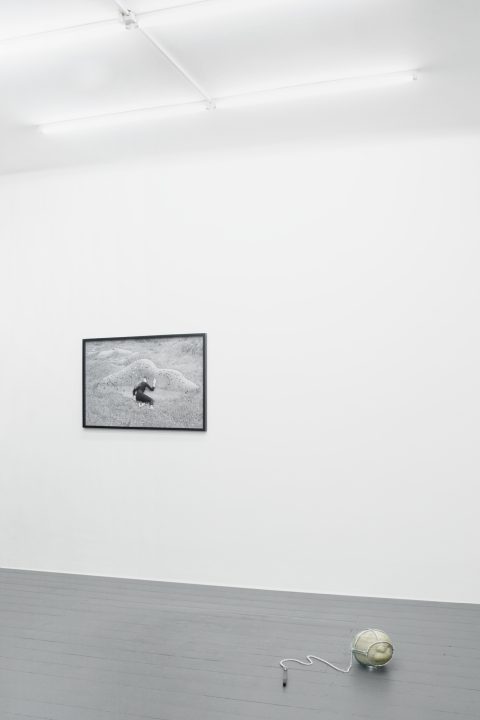
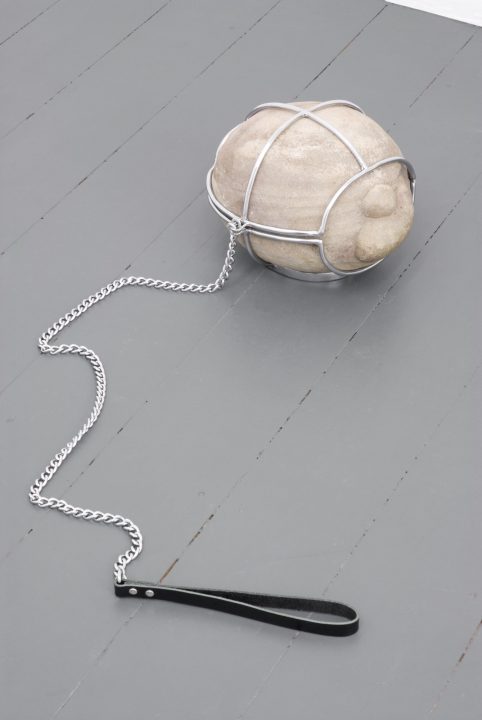
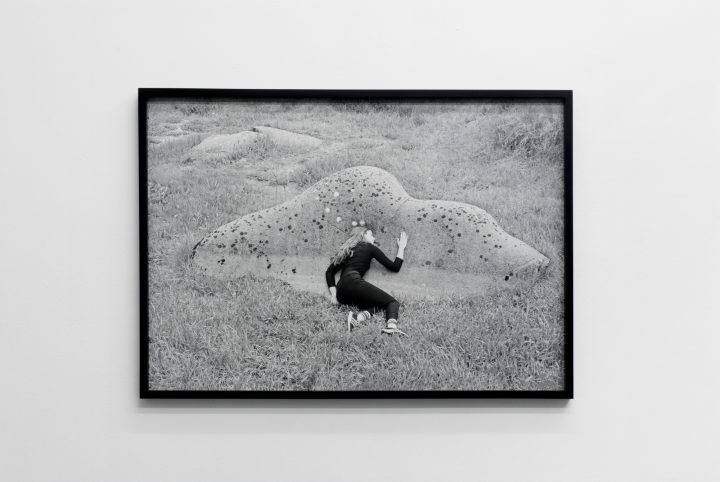
5) The body is long, wide, tall, and deep: it is vast. All of its extremities constantly touch other bodies. The concretion begins from an impurity and expands outward making its presence known through a stratification. “Overcoming Becoming” is about a long time-scale and identifying the “Petric in the human.” (J. Cohen)
6) The body is immaterial. The body is a symbol for its larger Artistotelian anima. The concretion is only one body in a global geological age and one growth on an unimaginable time scale.
7) The Aristotelian “soul” can be compared to Jane Bennett’s vitality tracing its history through Kant’s “Anlagen” in the Critique of Judgment. The original spiritual intent is replaced by its organisational function and then by its natural will to survive.
8) Similarly, Morton’s Hyperobject resembles a contemporary sublime. As he describes the “octopus of the hyperobject emits a cloud of ink as it withdraws from access.” The trace of the body remains after its physical presence in a chain of material and physical reactions. The black and white photographs of the artist assimilating with the concretions. Hyperobjects: Philosophy and Ecology after the End of the World (pg. 39)
9) The silhouette of the body is visible only against other bodies. Like Ana Mendieta’s Silueta series, Inescu is using the body to molt into nature and brings up the inherent spirituality of the connection between human and the world. But it could go either way, human and material, one into the other and all into a single mass.
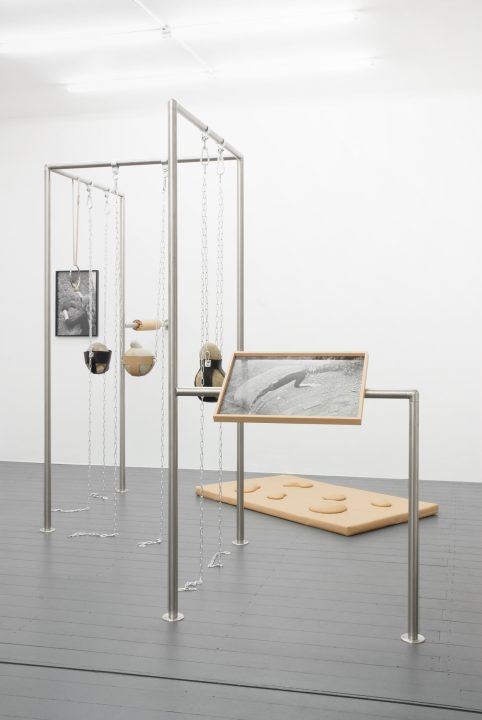
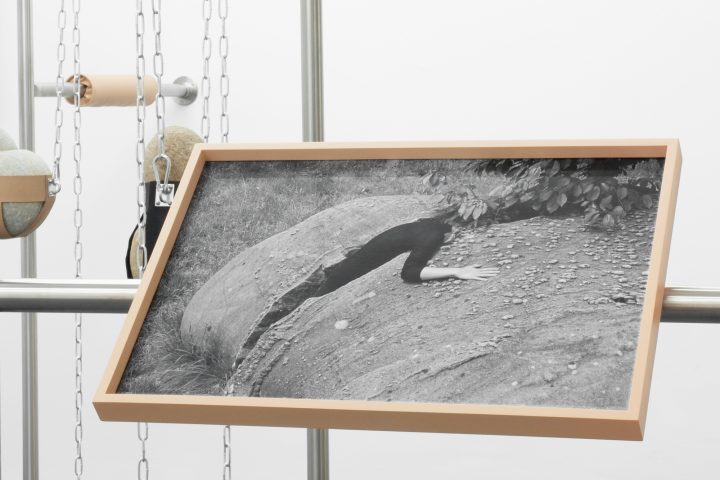
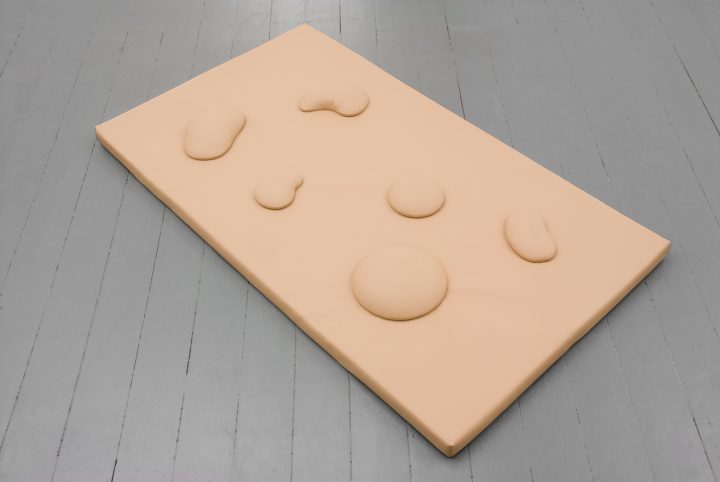
10) The body is visible but its vitality is not.
11) The body is also a prison for the mass. Each concretion points to a larger phenomenon in science and nature. Each exemplar is but a portion of something larger. Its outlines show its restrictions and its borders.
12) Reversing the sculptural trope of Michelangelo’s forms being “freed” from blocks of marble the concretions of Inescu portray the freedom of natural forms to exist in the imagination as provocative images symbols of our own lives. De-Anthropocentering the stone means recognising its own natural body.
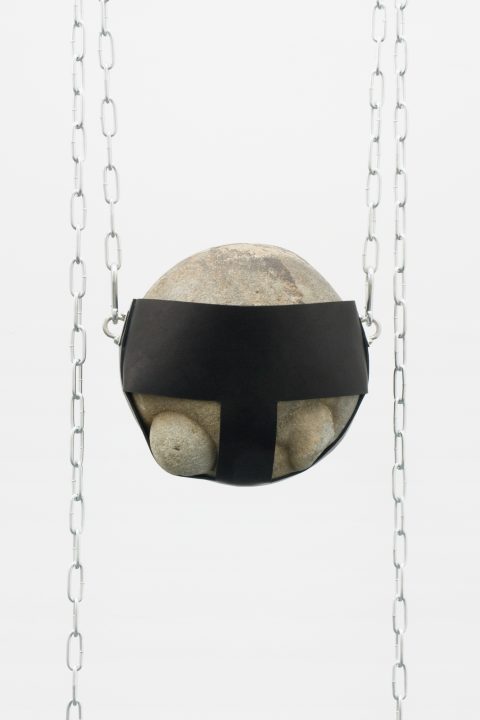
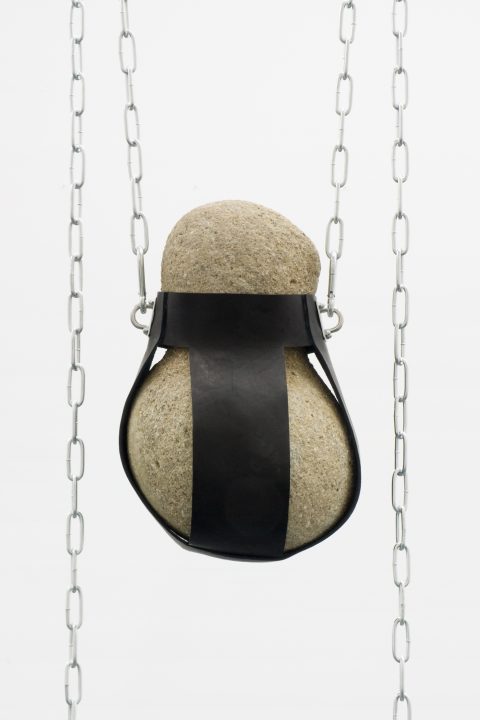
13) Sculpting the stone has become the sculpting of the body, through exercise, routine, aesthetics, and functionality. Sculpting our environment also represents these bodies and forms in particular ways. Leather seats cradling the stones change the boundaries of the object, their corporeality.
14) In an environment altered by human activity, natural concretions exist continuously touching and external boundary of air with higher concentrations of radiation and gases than ever before. In their leather seats, small concretions are anthropomorphised into “players” communicating with their man-made structure.
15) Repeating that the body is both infinite and prison-like, it is both glorious, and a cadaver. A fossil and the remnant of a living thing.
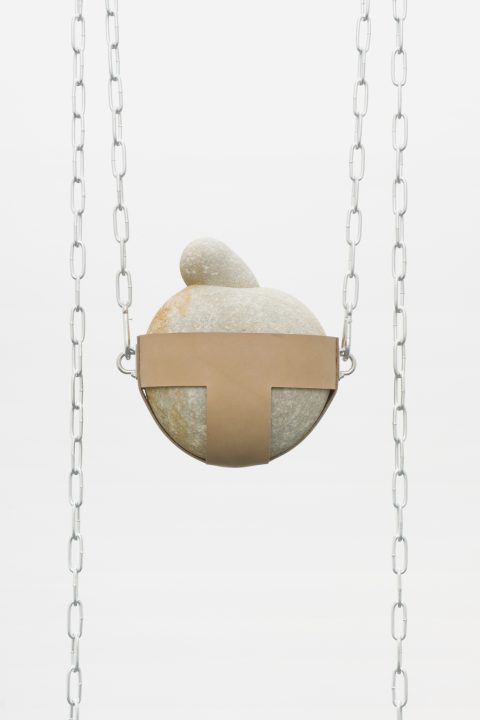
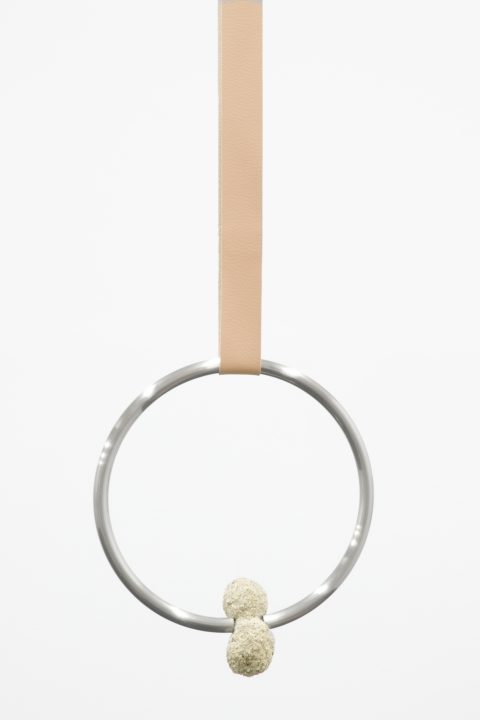
18) Body of bodies: because the body is connected to subjectivity and completion, there is never one body. There is only one or multiple. The concretion is a good example of this as even a single concretion contains an impure core and rests in a differentiated density of uniform material. The human body is a collection of organs, of bodies and cells and smaller organisms.
19) Self-body: The strange body, a body identified in its multiplicity and singularity as one.
20) The body cosmic: a body as a monic entity. Touching the rest of the universe through the tentacular reach of vibrating particles. The feet to the floor, the floor to the earth, the earth to the magma, the magma to the tectonic plates. The concretions have washed through prehistoric waters before landing here.
21) Corpus: an amalgamation of pieces. In the installation, sculptures and photographs are incorporated in a network building a corpus. The Corpus has hundreds of organs each reaching in their own directions in a total chaos while totalizing itself into a whole.
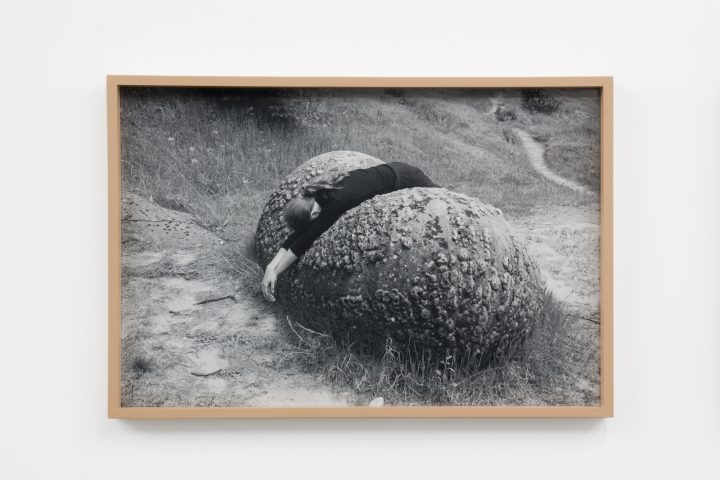
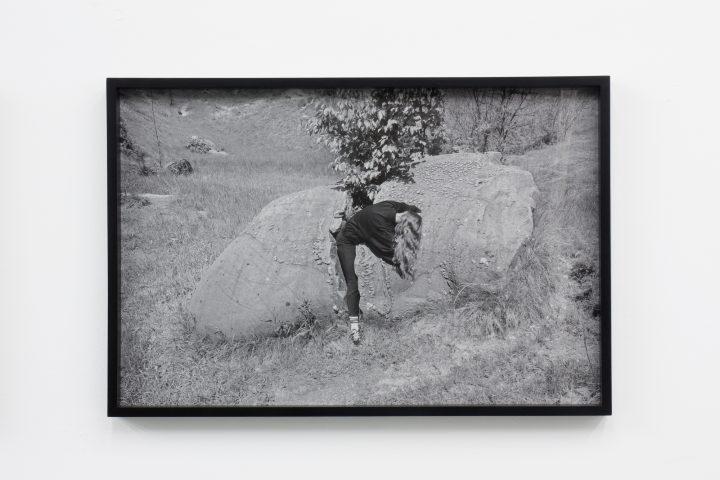
22) The body is sensual. Erotic. The body always has tactile, visual, and olfactory properties that ground it in a compound materiality. Fresh leather, a wet stone.
23) The body is therefore ours. It defines subjectivity and belongs to itself. The desire to possess other bodies is therefore frustrated by that impossibility. The concretions live in a geological time and its possession by such a short-lived human-timescale contradicts its powerful vitality.
24) To repeat the necessity of Jean-Luc Nancy to write in the form of an indices: “because the body has no totality, no synthetic unity. There are only pieces and fragments. There is one stone after another, a stomach, an eyebrow, a nail, a fist, a shoulder, a small intestine, a pancreas” and even a gallstone in the mix.
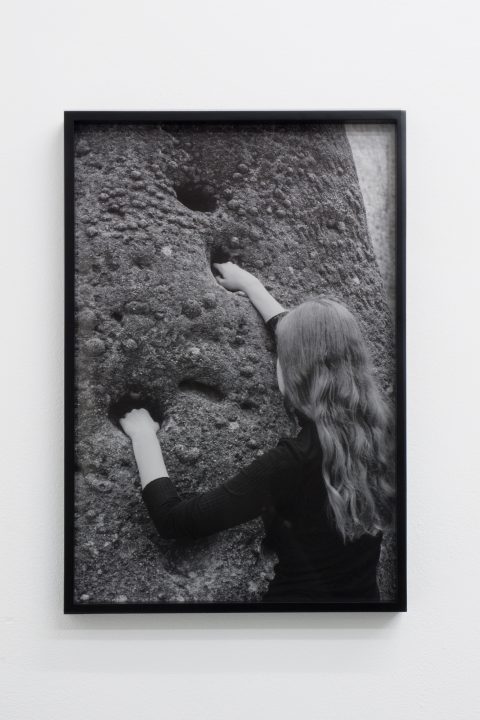
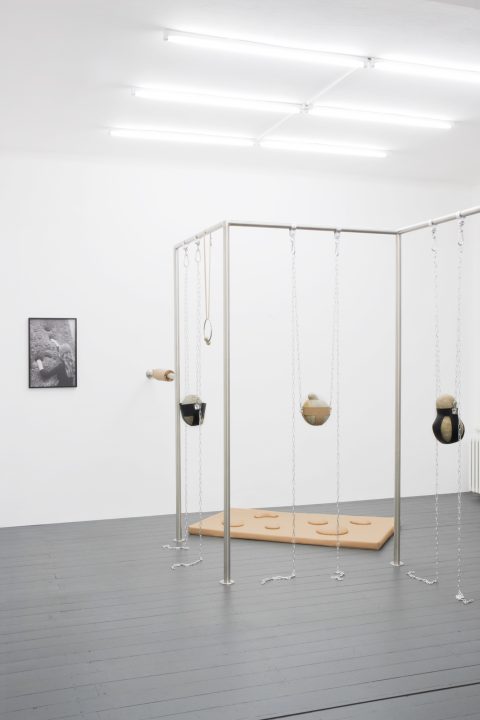
25) The precision of the body is in all of these parts. Just as the intention of the installation is in every piece that makes up the whole. Even the walls and floor which are always present take on a form in collaboration with the temporary installation to become one container of intensities and vacuums. Matter that is denser here, vaporous there. Stratification within 1 concept.
26) The body is contained by its skin. Made literal by the leather, personifying desire, subjecthood transforming into objecthood. Fetishisation is component in the market system and matter’s alienation from its natural environment.
27) 27 Indices because 27 is 3^3. 2 + 3 + 4 + 5 + 6 + 7 = 27. Dark matter is theorised to occupy 27% of the universe. 27 is the number of books that make up the New Testament. It is the number of letters in both the Hebrew and Spanish alphabet. Also because 1 multiplied by any number is itself. Therefore 1×27=27 as organs operating together in a single collective body.
An all-encompassing body can be multiplied out from any multiplicity to bind it into one collective. Stone, Massif, Mountain, Range, Tectonic Plate, Biosphere, Continent, Hemisphere, World.
Read Jean-Luc Nancy’s Corpus here (In Spanish): https://imprografika.files.wordpress.com/2016/11/58-indicios-sobre-el-cuerpo-extensic3b3n-del-alma.pdf
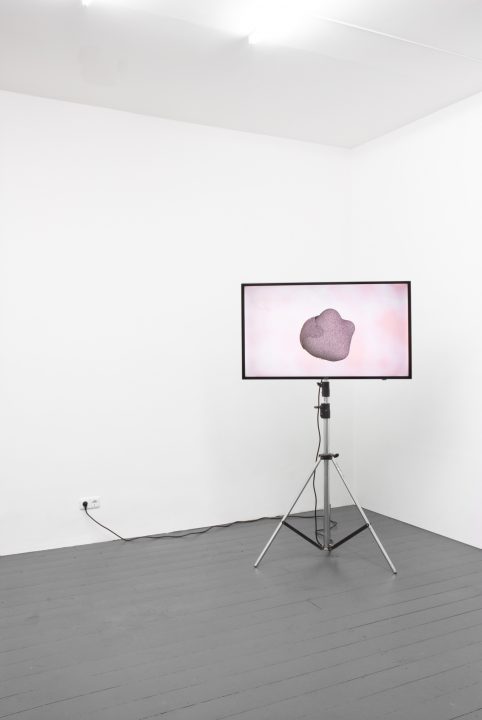
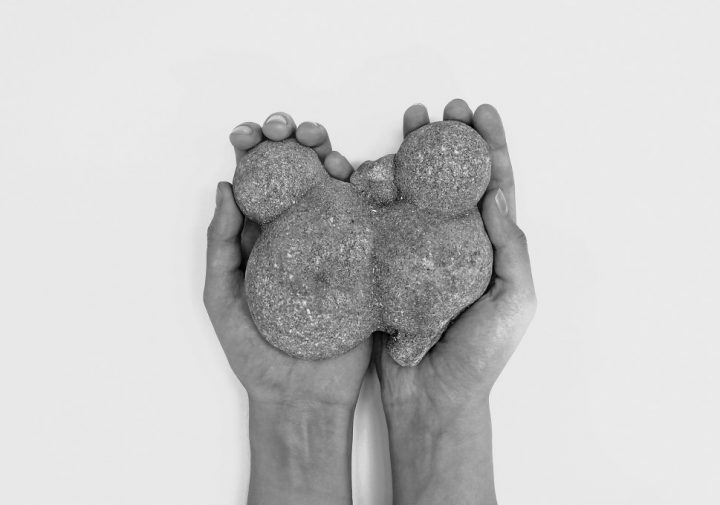
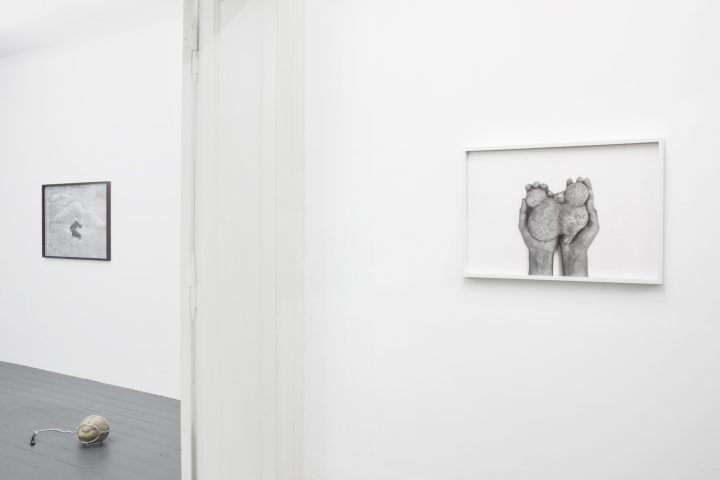

 Español
Español